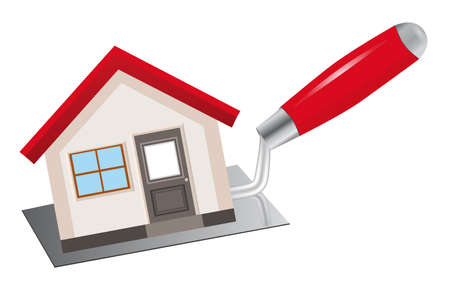1. Understanding Power Surges
Power surges are sudden spikes in electrical voltage that can occur in any home, and they’re a common concern for American households. These surges can last for just a fraction of a second, but their impact can be significant, especially on sensitive electronic devices. In the U.S., power surges often happen due to lightning strikes, downed power lines, issues with the utility company’s equipment, or even large appliances cycling on and off within your own home. When these unexpected jolts of electricity travel through wiring, they can cause irreparable damage to TVs, computers, kitchen appliances, and more. Understanding how and why power surges happen is the first step toward protecting your valuable electronics and ensuring the safety of your home’s electrical system.
2. Common Sources of Power Surges
Understanding where power surges originate is crucial for protecting your home’s electronics and appliances. Power surges are sudden increases in voltage that can cause significant damage, and they often stem from several common sources. Below, we’ll break down the primary culprits behind household power surges.
Electrical Storms
Lightning strikes are a leading cause of severe power surges in American homes. When lightning hits a power line or even the ground near your house, it can send an overwhelming surge through the electrical system. Even if the storm isn’t directly overhead, nearby strikes can still pose a risk.
Faulty Wiring
Old, damaged, or poorly installed wiring can also be a source of frequent but smaller surges. Faulty wiring increases the likelihood of inconsistent current flow and can lead to repeated surges that slowly wear down your devices. Signs like flickering lights, buzzing outlets, or burning smells often indicate a wiring issue that needs immediate attention.
Utility Company Issues
Sometimes, the problem comes from outside your home. Utility company operations—such as grid switching, downed power lines, or restoring electricity after outages—can introduce sudden spikes in voltage to your home’s electrical system. While less dramatic than lightning-induced surges, these utility-related events can still damage sensitive electronics.
Main Sources of Power Surges at Home
| Source | Description | Potential Impact |
|---|---|---|
| Electrical Storms | Lightning strikes causing rapid voltage spikes | Severe damage to all connected devices |
| Faulty Wiring | Aging or improperly installed electrical systems | Frequent minor surges; long-term wear on electronics |
| Utility Company Issues | Grid switching, outages, and restoration events | Sporadic surges affecting multiple homes in an area |
Takeaway
Identifying these common sources allows homeowners to take targeted steps toward prevention and protection. By staying vigilant about storms, maintaining proper wiring, and understanding utility-related risks, you can better safeguard your valuable electronics from unexpected power surges.

3. Preventing Power Surges
While power surges can be unpredictable, there are several practical steps homeowners can take to reduce the risk of damage. One of the simplest precautions is to unplug sensitive electronics during thunderstorms or when you’re away for extended periods. Devices like computers, televisions, and kitchen appliances are especially vulnerable to sudden voltage spikes. Another important step is to upgrade your household wiring, particularly if your home is older. Outdated or faulty wiring can increase the likelihood of surges and may not provide adequate protection for modern electronics. Consulting a licensed electrician to inspect and update your electrical system can go a long way toward keeping your home safe. Additionally, installing surge protectors at key outlets—especially for high-value devices—offers an extra layer of defense. Whole-house surge protectors are also available and can be installed at your main electrical panel, providing comprehensive coverage against external surges such as those caused by lightning strikes or issues with the utility grid. By taking these preventative measures, homeowners can significantly minimize the risk of costly repairs and extend the lifespan of their electronic devices.
4. Protection Solutions
When it comes to keeping your electronics and home safe from power surges, having the right protective devices in place is essential. Two of the most common solutions are point-of-use surge protectors and whole-home surge protection systems. Each offers distinct benefits, and understanding how to choose and use them can make a big difference in safeguarding your investment.
Surge Protectors: The First Line of Defense
Surge protectors, often called power strips with surge suppression, are widely used for individual devices or small clusters of electronics—think TVs, computers, gaming consoles, or home office equipment. They work by diverting excess voltage safely away from connected devices when a surge occurs. Here are a few tips for selecting and using surge protectors effectively:
- Check the Joule Rating: Higher joule ratings mean more protection. For sensitive electronics, look for at least 1,000 joules.
- Look for UL Certification: Only buy surge protectors that are UL listed (specifically UL 1449).
- Mind the Clamping Voltage: Lower clamping voltages offer better protection; look for ratings around 400V or lower.
- Replace Old Surge Protectors: They wear out over time—replace every few years or after a major surge event.
Whole-Home Surge Protection: Comprehensive Coverage
If you want peace of mind against larger surges, such as those caused by lightning strikes or grid fluctuations, consider a whole-home surge protection system. These devices are installed directly onto your electrical panel and provide coverage for all outlets and appliances in your house. While installation usually requires a licensed electrician, the comprehensive protection is worth the investment.
Comparing Surge Protection Options
| Type | Protection Level | Installation | Best For |
|---|---|---|---|
| Point-of-Use Surge Protector | Covers plugged-in devices only | User-installed (plug-in) | Electronics, appliances, home office gear |
| Whole-Home Surge Protector | Covers entire electrical system | Professional installation required | Major appliances, hardwired systems, overall home safety |
Pro Tips for Maximizing Protection
- Avoid daisy-chaining multiple surge protectors together—it’s not safe and can decrease effectiveness.
- If you live in an area prone to storms or frequent power outages, invest in both point-of-use and whole-home solutions for layered protection.
Choosing the right surge protection is about understanding your needs and following best practices. By investing in quality products and staying proactive about maintenance and replacement, you’ll keep your household’s tech running smoothly no matter what the grid throws your way.
5. Signs Your Home Has Experienced a Power Surge
Recognizing the signs of a power surge in your home is crucial for preventing further damage and ensuring your safety. Power surges don’t always announce themselves with sparks and loud pops—sometimes, the clues are much subtler. Here are some common indicators that your house may have experienced a power surge:
Flickering or Dimming Lights
If you notice that your lights frequently flicker or dim for no obvious reason, it could be a sign that a surge has disrupted your electrical system. While one-off flickers might not be cause for alarm, repeated occurrences often point to underlying electrical issues caused by surges.
Tripped Circuit Breakers
Circuit breakers are designed to protect your home from electrical overloads. If they trip more often than usual, especially after a thunderstorm or when large appliances kick on, this could indicate that a power surge has overloaded the circuit.
Burnt Out or Fried Electronics
One of the most telling signs of a power surge is finding electronics or appliances that suddenly stop working or show visible signs of damage, such as burn marks, melted wires, or strange odors. Devices like computers, TVs, and kitchen appliances are especially vulnerable to surge-related failures.
Sparking Outlets and Scorched Plugs
If you see sparks when plugging in devices or notice scorch marks around your outlets, these are red flags that should not be ignored. This kind of damage often follows a strong power surge and can put your home at risk for electrical fires.
Unusual Noises
Buzzing, humming, or popping sounds coming from outlets or breaker panels can also signal that a recent power surge has stressed your wiring. These noises often accompany other symptoms like tripped breakers or flickering lights.
Reset Clocks and Electronics
After a power surge, you may find that digital clocks or electronic timers throughout your home have reset unexpectedly. This is another subtle but common sign that your home’s electrical system has been hit by an unexpected jolt.
What to Do If You Notice These Signs
If any of these warning signals sound familiar, it’s important to take action quickly. Unchecked power surges can lead to expensive repairs—or worse, put your family’s safety at risk. Consider consulting with a licensed electrician to inspect your wiring and recommend protective measures to safeguard against future surges.
6. What to Do After a Power Surge
Step 1: Inspect Your Home for Obvious Damage
After a power surge, your first priority should be safety. Start by checking your home for any signs of electrical damage such as burnt outlets, tripped breakers, or unusual smells like burning plastic. If you spot any sparks or smoke, turn off the main power supply immediately and avoid touching affected areas.
Step 2: Unplug and Assess Electronics
Carefully unplug all electronics and appliances that were in use during the surge. Inspect cords, plugs, and devices for visible damage. Don’t attempt to turn them on right away—doing so can worsen internal issues if they’ve been compromised.
Step 3: Reset Circuit Breakers and GFCIs
If your breaker panel has tripped circuits, reset them one at a time by switching them fully off and then back on. Also, check Ground Fault Circuit Interrupters (GFCIs) in kitchens, bathrooms, and garages—press the “reset” button if they’ve been triggered.
Step 4: Test Your Devices Safely
Once you’ve assessed your equipment visually, plug in and test electronics one at a time in outlets you know are working. Pay attention to unusual noises, flickering screens, or failure to start—these are red flags that something may be wrong inside the device.
Step 5: Watch for Subtle Signs of Damage
Some problems caused by surges aren’t immediately obvious. In the days following an event, keep an eye out for electronics that freeze up, lose settings, or show error messages. These could indicate damaged internal components.
Step 6: Decide When to Call a Professional
If you encounter persistent electrical issues—such as repeated breaker trips, non-functioning outlets, or multiple malfunctioning devices—it’s time to call a licensed electrician. Likewise, if you see scorch marks or smell burning from outlets or panels, don’t take chances with DIY fixes. A professional assessment ensures your home remains safe and helps prevent future surges from causing further damage.
7. When to Call an Electrician
While many power surge issues can be managed with basic preventative measures and DIY fixes, there are certain situations where it’s crucial to call in a licensed electrician. If you notice frequent or severe power surges, persistent flickering lights, burnt outlets, or a burning smell coming from your electrical panel, these are clear signs of underlying problems that require professional expertise. Attempting to fix complex wiring or electrical panel issues on your own can be dangerous and may violate local codes.
In the U.S., hiring a licensed electrician ensures that repairs and installations meet safety standards and comply with local regulations. When searching for a qualified professional, start by asking friends or neighbors for recommendations, or check trusted online platforms like Angie’s List or the Better Business Bureau for reviews and ratings. Always verify that the electrician is licensed and insured in your state—this information should be readily available upon request. Don’t hesitate to ask about their experience with surge protection systems and residential repairs.
Ultimately, knowing when to reach out for professional help not only safeguards your home and electronics but also gives you peace of mind. Remember, proper electrical work is an investment in your family’s safety and your property’s long-term value.

